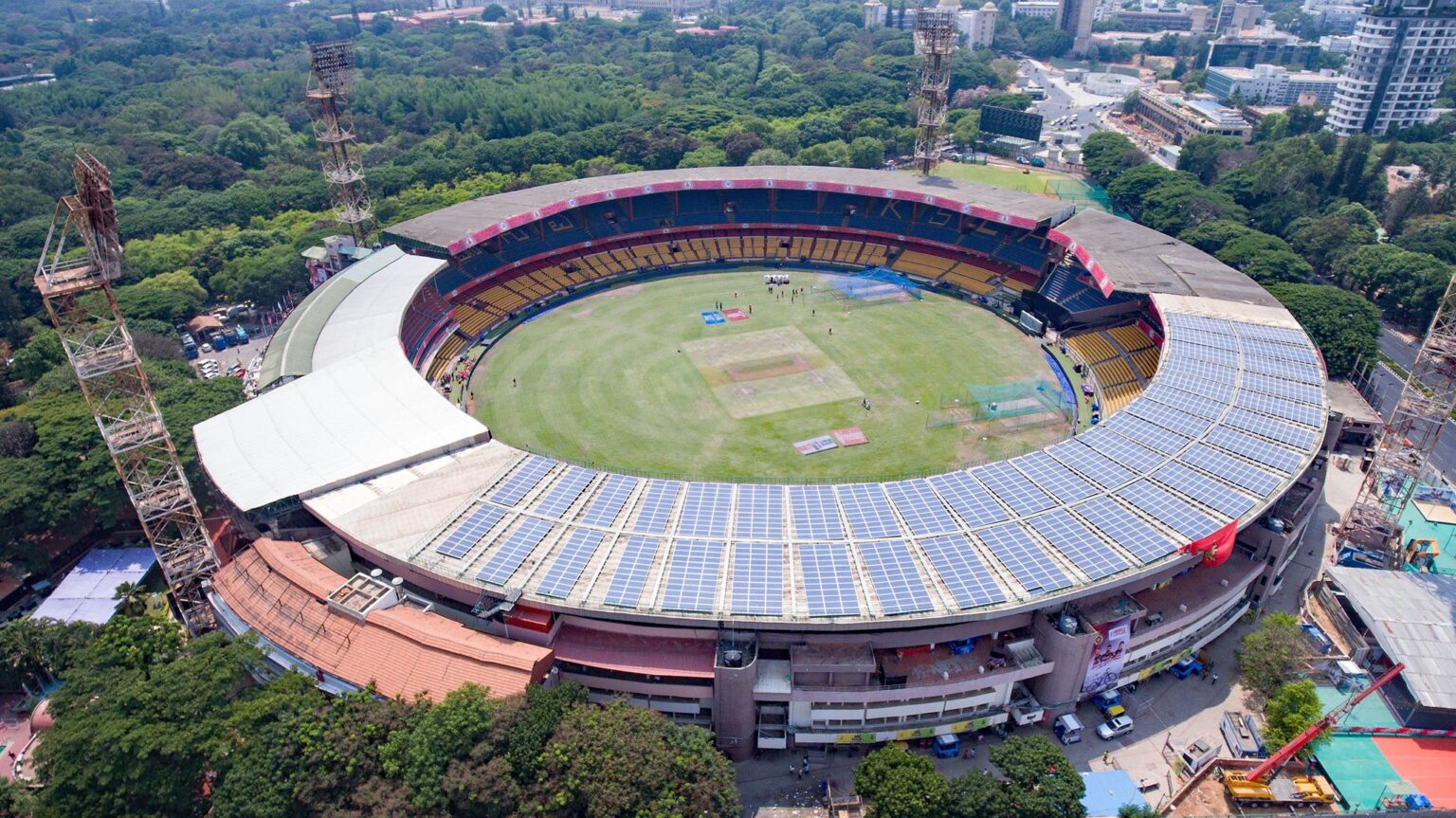national cricket academy
About Us
The National Cricket Academy is a cricket facility of the BCCI for the purpose of developing young cricketers who have been identified as having the potential to represent the Indian cricket team. It was established in the year 2000 and is located in Chinnaswamy Cricket Stadium, Bengaluru, Karnataka in India. The facility is also used for the rehabilitation of injured players.
The NCA was the brainchild of cricket administrator and former BCCI President Raj Singh Dungarpur. – Sameer Khan
Mission
Fostering the growth and development of talented young cricketers, providing them with the necessary coaching, facilities, and resources to reach their full potential.
Vision
Offering elite-level training programs aimed at enhancing the skills, fitness, and mental resilience of players aspiring to represent their country at the highest level.
In 2014, BCCI tied up with both Cricket Australia and the ECB to get experts in for helping draw its new structure. BCCI decided to make these changes along the lines of the state-of-the-art high-performance centers based in Australia and England as part of the revamp of the National Cricket Academy.
In the new plan, the NCA has a tie-up with the MRF Pace Foundation to train fast bowlers from across the country.
Former Indian cricketer VVS Laxman is the current director of the NCA
BCCI president Sourav Ganguly and Secretary Jay Shah led the foundation of the new National Cricket Academy facility at Bengaluru. It is being built near the airport of Bengaluru in 40 acres land. It will have three cricket ground, gymnasium, 40 practice pitches, swimming pool, rooms to stay for upcoming players. The foundation got laid by Sourav Ganguly and Shah in an event on 16 February 2022
- Sunil Gavaskar was a member of the NCA committee in 2000 and resigned after criticism from NCA Chairperson Raj Singh Dungarpur on his comments in a newspaper column that it was not correct for NCA trainees to get a tour match at the cost of local teams.
- 3 Cricketers in the 2013-14 batch – Yogeshwaran, Murali Kishore and Karn Sharma were released from the academy citing indiscipline
The Indian National Cricket Academy (INCA) stands tall as a symbol of excellence and dedication in honing the skills of aspiring cricketers in India. Established in 2000, the academy serves as the primary training ground for the nation’s talented youth and aspiring professionals. Endorsed by the Board of Control for Cricket in India (BCCI), the INCA has played a pivotal role in shaping India’s cricketing landscape and producing world-class players. This article delves into the journey and significance of the Indian National Cricket Academy in nurturing the future of Indian cricket.
History and Establishment
The idea of establishing a national cricket academy in India was conceived to address the need for a structured and specialized coaching setup to develop talented cricketers from a young age. The BCCI recognized that a centralized facility would help young talents receive the best possible training and support to thrive in international cricket.
In 2000, the Indian National Cricket Academy was inaugurated in the heart of Bengaluru, Karnataka. The location was strategically chosen due to the city’s pleasant climate and excellent cricketing infrastructure. The sprawling academy boasts state-of-the-art facilities, including multiple cricket grounds, well-equipped indoor nets, fitness centers, sports science laboratories, and residential accommodations.
The Role of INCA in Indian Cricket
The Indian National Cricket Academy has played a pivotal role in shaping the future of Indian cricket in several ways:
- Player Development: The primary objective of the INCA is to groom young talent and provide them with the best coaching and facilities. Emerging players from different parts of India are identified and invited to the academy for comprehensive training programs, led by renowned coaches and former cricketers. This focused approach has resulted in the emergence of many successful cricketers who have gone on to represent the Indian national team with distinction.
- Specialized Coaching: INCA employs a team of expert coaches who specialize in various aspects of the game. From batting, bowling, fielding, and wicketkeeping to mental conditioning and tactical acumen, the academy offers a holistic approach to player development. This specialized coaching has enabled players to refine their skills and address weaknesses effectively.
- Exposure to Modern Techniques: The academy remains up-to-date with the latest trends and techniques in cricket. Modern technology is integrated into the training process, allowing players to analyze their performances through video analysis and other data-driven tools. This exposure to advanced methodologies helps players adapt to the ever-changing demands of the game.
- Injury Management and Rehabilitation: INCA also focuses on player fitness and injury management. Qualified physiotherapists and medical staff are on hand to attend to players’ needs, ensuring they are in top physical condition to perform at their best.
- Mentorship and Leadership: Apart from honing skills, INCA emphasizes the importance of leadership and sportsmanship. Former cricketing legends are often invited to the academy as mentors, imparting valuable life lessons and instilling a sense of national pride among the players.
- Talent Identification Programs: INCA conducts talent identification programs across the country to unearth hidden gems in the cricketing landscape. This initiative ensures that deserving talent from remote areas also gets a fair chance to showcase their abilities and receive expert training.
Success Stories
The success of the Indian National Cricket Academy can be measured by the numerous cricketers who have risen to fame after receiving training at the institution. Some of India’s most iconic cricketers, including Virat Kohli, Rohit Sharma, Jasprit Bumrah, and Ravindra Jadeja, are products of the INCA. These players have not only achieved individual success but have also played pivotal roles in India’s triumphs on the international stage.
Conclusion
The Indian National Cricket Academy stands as a testament to India’s passion and commitment to the game of cricket. By providing top-notch coaching, state-of-the-art facilities, and a nurturing environment, the academy has nurtured young talent and produced cricketing icons. As the INCA continues its journey, it will undoubtedly remain an essential pillar in the growth of Indian cricket, fostering the stars of tomorrow and perpetuating the nation’s love affair with this beloved sport.
The Indian National Cricket Academy (INCA) is a prestigious institution that plays a crucial role in nurturing and developing the cricketing talent of India. Established in 2000, it is situated in Bengaluru (formerly Bangalore), the capital city of the southern state of Karnataka. The academy serves as the primary training center for both male and female cricketers in the country, providing them with top-notch facilities, coaching expertise, and specialized programs to enhance their skills and overall performance.
Objectives of the Indian National Cricket Academy:
- Talent Identification: One of the primary functions of the INCA is to identify and select young talent from various parts of India. Talent scouts and coaches keep a keen eye on domestic tournaments and age-group competitions to spot promising players who show the potential to represent India at the international level.
- Skill Development: The academy aims to hone the skills of budding cricketers and fine-tune the abilities of established players. Through state-of-the-art facilities, net practice sessions, and guidance from experienced coaches, players work on improving their batting, bowling, fielding, and fitness levels.
- Psychological and Mental Conditioning: Cricket is a sport that requires mental strength and composure, apart from physical prowess. INCA provides specialized sports psychologists who work with players to help them cope with the pressures of international cricket and enhance their mental resilience.
- Injury Management and Rehabilitation: The academy also houses medical facilities to deal with injuries that players might sustain during their careers. Experienced physiotherapists and medical staff aid in injury management and facilitate the rehabilitation process for players on the road to recovery.
- International Exposure: INCA organizes exposure tours and friendly matches against other cricket-playing nations to give the trainees a taste of international cricket and help them understand the challenges they might face at that level. Such tours provide valuable experience and aid in building confidence.
- Educational Programs: Recognizing the importance of education alongside sports, the academy encourages its trainees to pursue their studies. The academy collaborates with educational institutions in Bengaluru to ensure that players can continue their education while honing their cricketing skills.
- Coaching and Support Staff Development: INCA doesn’t only focus on the players but also emphasizes developing competent coaches and support staff. Regular workshops and training programs are conducted to enhance the knowledge and expertise of coaches, physiotherapists, trainers, and other support personnel.
The Indian National Cricket Academy has played a significant role in nurturing talents like Virat Kohli, Rohit Sharma, Jasprit Bumrah, and many other prominent cricketers. Its commitment to providing a nurturing and competitive environment has contributed significantly to the success of Indian cricket on the global stage.



